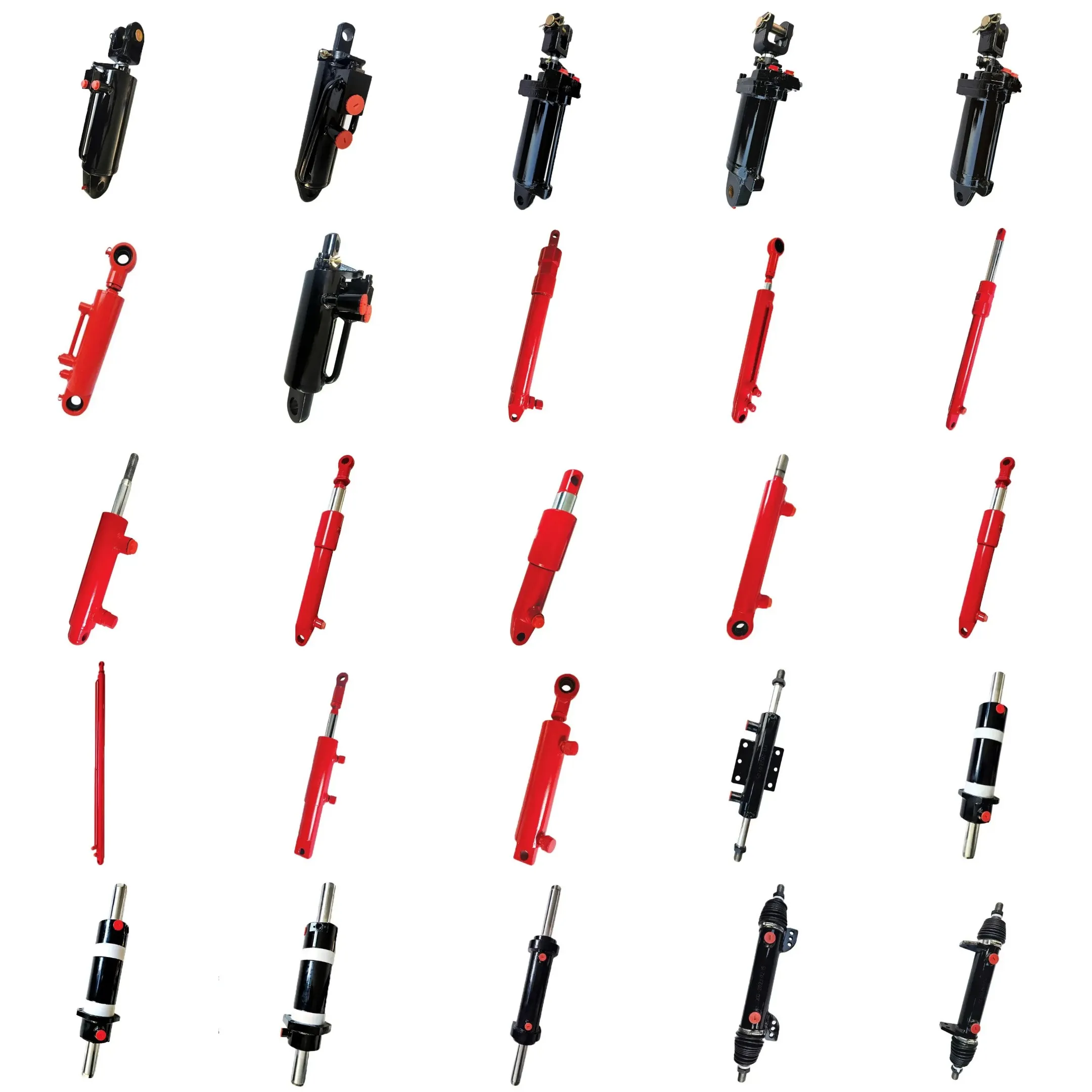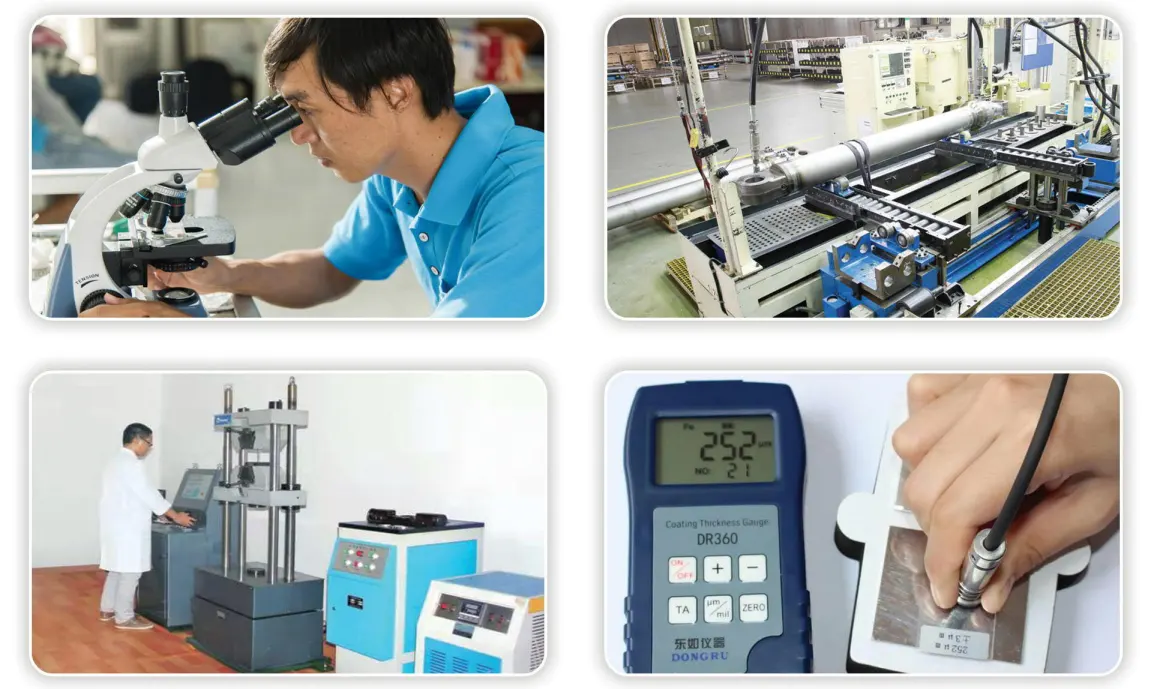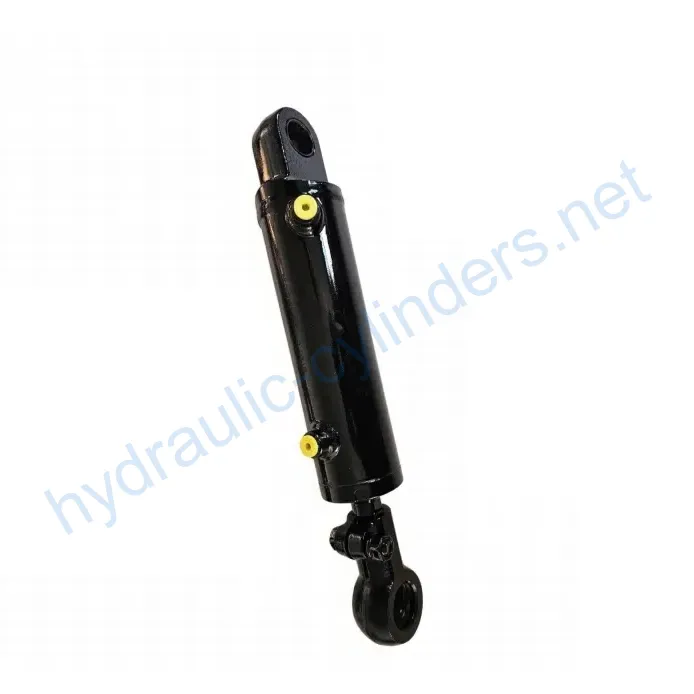Forklift Truck Steering Cylinder
Forklift Truck Steering Cylinder
Product Overview
The Forklift Truck Steering Cylinder is a critical component in the hydraulic steering system of forklifts. Its primary function is to convert hydraulic energy into mechanical force, allowing for precise steering control. This hydraulic cylinder operates under high pressure, enabling seamless maneuverability of the forklift, particularly in tight spaces or during heavy lifting operations. The efficiency of the forklift heavily relies on the performance of the steering cylinder, ensuring safety and operational effectiveness. With a specific focus on performance, durability, and reliability, this product is designed to meet the rigorous demands of various industrial applications.
Product Specifications
Key Parameters
- Cylinder Diameter: 70mm
- Rod Diameter: 40mm
- Travel: 178mm
- Installation Distance: 766mm
These specifications highlight the cylinder’s dimensions and capabilities, vital for ensuring compatibility with different forklift models. The cylinder diameter is designed for optimal hydraulic flow, while the rod diameter contributes to the strength and durability needed for heavy-duty applications. The travel distance is crucial for the cylinder’s ability to provide adequate steering response, and the installation distance ensures proper fitment in various forklift configurations.
Features of the Forklift Truck Steering Cylinder
- High durability and resistance to wear and tear
- Precision-engineered for optimal performance
- Sealed design to prevent hydraulic fluid leakage
- Compatible with various forklift models
- Easy installation and maintenance capabilities
We specialize in manufacturing this hydraulic cylinder, ensuring that our products can perfectly replace existing steering cylinders in the market. Our commitment to quality guarantees that you receive a reliable and efficient component for your forklifts.
Applications of the Forklift Truck Steering Cylinder
Industrial Warehousing
In industrial warehousing, the forklift truck steering cylinder plays a vital role in maneuvering heavy loads across narrow aisles. The precise steering control facilitated by this hydraulic component ensures that forklifts can navigate tight spaces, enhancing operational efficiency and safety. The ability to quickly adjust directions without losing stability is crucial in environments where time and space are of the essence.
Construction Sites
On construction sites, forklifts equipped with reliable steering cylinders are essential for transporting materials to various locations. The robustness of the steering cylinder allows for the movement of heavy loads over uneven terrain, providing the necessary control to prevent accidents and damage to both the equipment and the materials being transported.
Retail Environments
In retail environments, particularly in warehouses and distribution centers, forklifts require effective steering to manage stock efficiently. The steering cylinder ensures that stock is moved from storage areas to loading bays swiftly, maintaining a smooth flow in operations. This efficiency directly impacts the speed of customer service and inventory management.
Design Considerations and Selection Criteria
Load Capacity
When designing a forklift truck steering cylinder, load capacity is paramount. The cylinder must be engineered to withstand the maximum weight it will encounter, ensuring it operates effectively without risk of failure. This requires careful calculation and selection of materials that can handle high stress without deforming or breaking.
Sealing Integrity
Sealing integrity is a crucial design element for hydraulic cylinders. Effective seals prevent hydraulic fluid leakage, which is vital for maintaining pressure and performance. The choice of sealing materials, such as polyurethane or nitrile rubber, is essential to withstand the high pressures and harsh conditions often experienced in industrial applications.
Durability
Durability is another critical consideration. The steering cylinder must be able to endure constant use in demanding environments without degrading. This involves selecting high-quality materials and employing advanced manufacturing techniques to enhance wear resistance and prolong the cylinder’s operational lifespan.
Safety Features
Safety is paramount in the design of hydraulic components. Incorporating safety features such as pressure relief valves and robust construction helps mitigate risks associated with hydraulic failures. Ensuring these safety measures are in place protects not only the equipment but also the operators working with it.
Maintenance Accessibility
Designing for maintenance accessibility ensures that regular inspections and servicing can be performed efficiently. This consideration helps users keep the hydraulic system in optimal condition, minimizing downtime and extending the life of the equipment.
Sealing and Lubrication
Proper sealing and lubrication are vital for the longevity and efficiency of the forklift truck steering cylinder. Various sealing components, such as piston seals and rod seals, are critical for maintaining hydraulic pressure while preventing leaks. Utilizing durable materials like polyurethane and nitrile rubber ensures that seals can withstand the harsh conditions they operate under.
The surface of the cylinder body and threaded ends should undergo fine machining to enhance wear resistance, contributing to the overall effectiveness of the seals. Regular lubrication with appropriate hydraulic oil is necessary to reduce friction and wear, ensuring smooth operation and extending the service life of the cylinder. Operators should establish a routine to check fluid levels and replenish as needed to avoid lubrication issues.
Preventive Maintenance Measures
- Regular Inspections: Conduct routine checks of the hydraulic system for signs of wear or damage. This includes examining the cylinder for leaks and ensuring that all seals are intact.
- 润滑: Ensure that the hydraulic oil is regularly topped up and that lubrication points are adequately serviced to maintain smooth operation.
- 更换密封件: Schedule routine seal replacements to prevent leaks and ensure the efficient functioning of the hydraulic system.
Implementing these preventive maintenance measures is essential for ensuring the reliable operation of the forklift truck steering cylinder. By focusing on regular assessments and timely interventions, operators can mitigate the risks of unexpected breakdowns and costly repairs.
Installation Guidelines
Proper installation of the forklift truck steering cylinder is critical for optimal performance. Begin by ensuring that the installation area is clean and free of debris. Align the cylinder correctly with the forklift’s hydraulic system, ensuring that all mounting points are matched accurately. It’s essential to use appropriate mounting brackets to secure the cylinder in place, providing stability during operation. Tighten all bolts to the manufacturer’s specifications, and double-check alignment to prevent undue stress on the cylinder.
Once installed, connect the hydraulic lines carefully, avoiding sharp bends that could impede fluid flow. After the connections are secure, fill the hydraulic system with the recommended oil, and bleed air from the system to ensure smooth operation. Finally, conduct a test run to verify that the cylinder operates correctly and responds to steering input without hesitation. Regularly monitor the installation for any signs of leaks or misalignment to ensure continued performance.
Common Maintenance Tasks
定期检查
Regular inspections are crucial for identifying potential issues before they escalate. Operators should visually check for signs of wear, leakage, or damage to the steering cylinder and surrounding components. This proactive approach allows for timely interventions, preventing unexpected downtime and costly repairs.
Proper Lubrication
Maintaining proper lubrication levels is essential for the smooth operation of the hydraulic system. Regularly check the hydraulic fluid levels and ensure that it is fresh and clean. Contaminated or low fluid levels can lead to increased wear and operational inefficiencies.
Seal Replacement
Over time, seals can degrade due to constant exposure to hydraulic fluid and pressure fluctuations. Regularly replacing seals can prevent leaks and maintain the efficiency of the hydraulic system. Establish a routine for seal inspections and replacements based on usage and environmental conditions.
Safety Considerations and Environmental Factors
When working with hydraulic systems, safety measures are paramount. Operators should be trained in the safe handling of hydraulic fluids and aware of the potential risks associated with hydraulic failures. Implementing safety protocols, such as wearing protective gear and ensuring proper ventilation in work areas, is essential to safeguard personnel.
Environmental considerations also play a role in hydraulic system management. Proper disposal of hydraulic fluids and maintenance waste is crucial to prevent environmental contamination. Adhering to local regulations regarding hazardous materials ensures compliance and protects the surrounding ecosystem.
Fault Diagnosis and Common Issues
Leakage
One of the most common issues with hydraulic cylinders is leakage. This can occur due to worn seals, improper installation, or damage to the cylinder. Operators should visually inspect the cylinder regularly for signs of fluid loss and address any leaks promptly.
Reduced Performance
If the steering cylinder exhibits reduced performance, it may indicate issues with hydraulic fluid levels or blockages in the hydraulic lines. Operators should check fluid levels and ensure that all lines are clear and free of obstructions.
Unusual Noises
Unusual noises during operation can signal problems within the hydraulic system. This may suggest air trapped in the system or worn components. Conducting a thorough inspection and bleeding the system as necessary can help resolve these issues.
Troubleshooting Tips
To effectively diagnose and resolve issues with the forklift truck steering cylinder, operators should follow a systematic approach. Begin by reviewing the hydraulic fluid levels, ensuring they are within the recommended range. Next, inspect for visible signs of damage or wear on seals and cylinder surfaces.
For preventative measures, regular maintenance routines should be established, focusing on inspections, lubrication, and timely seal replacements. These practices will help minimize downtime and extend the lifespan of the steering cylinder.

About Our Company
We are a leading manufacturer of hydraulic cylinders, boasting a diverse range of products tailored to meet the needs of various industries. Our commitment to excellence has positioned us as one of the foremost hydraulic cylinder manufacturers and wholesalers in both domestic and international markets. We pride ourselves on our professional expertise, international certifications, and the ability to provide customized services that cater to specific client requirements.
Our state-of-the-art production equipment ensures that we maintain the highest standards of quality throughout our manufacturing processes. Additionally, our dedicated after-sales service team is always available to assist our clients with any inquiries or support they may need, ensuring that customer satisfaction remains a top priority.

Author: lyl
参观我们的 VR 工厂
通过以下方式参观我们的 VR 工厂
液压缸应用:


